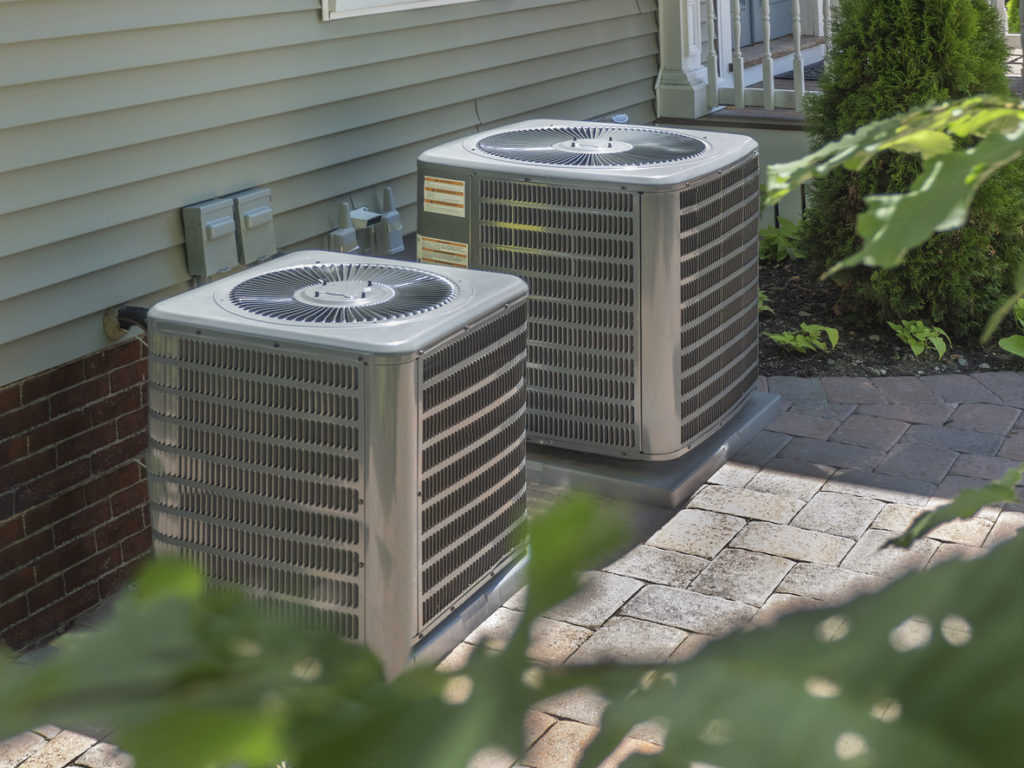
Air conditioning is awesome.
That’s true for a lot of reasons, but here are two big ones: First of all, air conditioning is incredibly useful. Not many people want to sweat through Maryland summers, and our air conditioning systems help us to avoid the heat and keep us cool and comfortable.
Second, air conditioning is ingenious. There’s a beautiful simplicity to how it works, and its principles are carried out by some nifty engineering feats that we too often take for granted.
Yes, we’re a little biased here at Rod Miller, but we tend to think that people shouldn’t take air conditioning for granted. Because, again: It’s awesome.
With that in mind, in this article we’ll walk through the basic steps involved in the refrigeration cycle, which is the driving process that allows your air conditioning to cool your air. This information is helpful in that it will give you a better understanding of your system. And, on top of that, it’s just cool.
So, ready to learn how AC works? Let’s dive in. Here’s a breakdown of the air conditioning process in five key parts.
1. Refrigerant
The entire process of air conditioning is made possible by carefully designed refrigerant that enables the transfer of heat from inside to outside. For years, the most common type of refrigerant used was R-22. However, due to environmental concerns, R-22 is being phased out and replaced with R-410A refrigerant, a hydrofluorocarbon compound (HFC).
All refrigerants are made to pass between phases from liquid to gas, allowing for the transfer or heat. In this way, refrigerant is the blood of an air conditioning system; like blood transfers oxygen, refrigerant transfers heat within a closed loop of coils and pipes.
The refrigerant is heated up via increased pressure from the compressor, so that, when it travels outside, it’s a vapor that’s hotter than the surrounding air. It passes its heat to the surroundings with the help of a fan. Inside, it’s made cool and becomes a liquid via the expansion valve. A fan is blown over the evaporator coils, allowing the transfer of indoor heat to the refrigerant, which is then carried back outside to repeat the process continuously.
Here’s a simplified version of the process.
2. Compressor
The compressor does what its name suggests: it compresses the refrigerant by reducing the gas’ volume. The refrigerant enters the compressor as a low-pressure gas; on the basis of the combined gas law, its temperature rises as it’s subjected to increased pressure.
The compressor is typically located outside the home, where the heat from indoors will be dispersed.
3. Condenser coils
After passing through the compressor, the refrigerant enters the condenser coils. These coils are also outside the home and are designed to facilitate heat transfer from the refrigerant to outdoor surroundings.
While refrigerant passes through these coils in a heated gaseous state, a fan blows air over the coils, dispersing heat outside. (In many units, the fan is one of the loudest system components.)
4. Expansion valve
After passing through the condenser coils, the refrigerant passes back inside the home and moves through the expansion valve – commonly referred to by the acronym TXV.
This component does the opposite of the compressor; it expands the refrigerant, decreasing its pressure and (again on the basis of the combined gas law) cooling it so that it enters the evaporator coils in a cool, liquid state, where it’s ready to absorb heat from inside the home.
5. Evaporator coils
Evaporator coils are where the magic happens. It’s at this stage that your air conditioning picks up heat from your home, thereby cooling your environment.
After passing through the expansion valve, the refrigerant is a depressurized liquid. As it travels through the evaporator coils, air from your home is passed over it. Because the refrigerant is cooler than the air from your home, it absorbs the heat from the air and begins to evaporate to form a vapor.
It’s at this stage that your air conditioning takes moisture from the air, leading to condensation on the evaporator coils that must be removed via a drain line.
Want to keep your AC working at its best this summer?
Hopefully, this information has helped you to understand your air conditioning system a bit better – and maybe even given you a newfound appreciation for it.
Again, we’re a little bit biased, but we think air conditioning is objectively awesome. It’s a joy to work on systems that keep people comfortable and safe (and are pretty cool, too).
If you want to ensure that your air conditioning works effectively this summer, get in touch with us. We offer air conditioning repair services to Maryland homeowners around the Gaithersburg area. We also offer service agreements that make regular checkups cost-effective, allowing each step and component in the cooling process to be reviewed so that your system keeps running the way it should.
Don’t leave your comfort to chance this summer. Get in touch with us today to keep your air conditioning working at its best.


